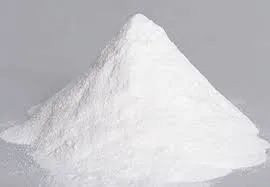
12月 . 20, 2024 19:30 Back to list
Exploring the Properties and Applications of HPMC Polymer in Modern Industries
Understanding HPMC Polymer Properties, Applications, and Benefits
Hydroxypropyl methylcellulose (HPMC) is a versatile and widely used polymer in various industries, particularly in pharmaceuticals, food processing, construction, and personal care products. As a cellulose derivative, HPMC is derived from natural cellulose sources and modified to enhance its performance and functionality. This article aims to explore the properties, applications, and benefits of HPMC polymer.
Properties of HPMC Polymer
HPMC is a white to off-white powder that is hygroscopic, meaning it can absorb moisture from the air. It is soluble in cold water but forms a gel-like consistency when heated, providing unique rheological properties. This polymer has a wide range of molecular weights and degrees of substitution, which allows it to be customized for specific applications. The viscosity of HPMC solutions can vary significantly based on the concentration and specific formulation.
One of the key characteristics of HPMC is its ability to form films. This property makes it an excellent choice for applications requiring coatings or protective barriers. Moreover, HPMC is non-toxic and considered safe for use in food and pharmaceuticals. Its compatibility with a wide range of substances, including pigments and surfactants, further enhances its functionality.
Applications of HPMC Polymer
In the pharmaceutical industry, HPMC is commonly used as a binder, thickener, and film-forming agent in tablet formulations. Its controlled-release properties allow for the gradual release of drugs, improving therapeutic efficacy and patient compliance. Furthermore, HPMC is often employed in the preparation of ophthalmic solutions and dietary supplements due to its stabilizing and viscosity-enhancing capabilities.
In the food industry, HPMC serves as a thickening and stabilizing agent in various products such as sauces, soups, and dressings. It helps improve texture, enhance mouthfeel, and increase product shelf-life. HPMC is also utilized in gluten-free and low-fat formulations, providing the necessary viscosity and cohesion without the need for gluten.
The construction industry has also recognized the benefits of HPMC. It is commonly used as a key ingredient in polymer-modified mortars, tile adhesives, and joint compounds. HPMC improves the workability of these materials, allowing for easier application and enhanced adhesion. Additionally, its water-retention properties help ensure proper curing, reducing the risk of premature drying and cracking.
hpmc polymer

In cosmetics and personal care products, HPMC is used as a thickener and emulsifier, enhancing the stability and appearance of lotions, creams, and gels. Its film-forming capabilities are also leveraged in hair styling products, providing hold and texture without compromising flexibility.
Benefits of HPMC Polymer
The benefits of using HPMC polymer are manifold. Firstly, its versatility allows it to be employed in diverse applications across various industries, making it a valuable ingredient for formulators. The polymer's ability to enhance texture, stability, and release properties is vital for products that demand high-performance standards.
Secondly, HPMC is an environmentally friendly option, being derived from sustainable natural resources. It is biodegradable and safe for human consumption, aligning with the growing demand for eco-friendly and health-conscious products. This characteristic makes it particularly attractive for manufacturers aiming to meet consumer preferences for sustainability.
Furthermore, HPMC's compatibility with a wide range of other substances expands its applicability. It can be combined with various excipients in pharmaceuticals and other formulation systems, facilitating the creation of complex products with enhanced performance.
Lastly, the ease of use and formulation adaptability of HPMC polymer makes it a preferred choice for many manufacturers. Its availability in various grades and forms allows for easy integration into existing processes, streamlining production and reducing formulation time.
Conclusion
In summary, hydroxypropyl methylcellulose (HPMC) is a multifaceted polymer widely adopted across diverse industries for its unique properties and benefits. From pharmaceuticals to food, construction, and cosmetics, HPMC's ability to enhance performance and stability has made it a staple ingredient in many formulations. As industries continue to evolve and seek sustainable solutions, HPMC's role is likely to expand, solidifying its position as a key player in the world of polymers.
-
Versatile Hpmc Uses in Different Industries
NewsJun.19,2025
-
Redispersible Powder's Role in Enhancing Durability of Construction Products
NewsJun.19,2025
-
Hydroxyethyl Cellulose Applications Driving Green Industrial Processes
NewsJun.19,2025
-
Exploring Different Redispersible Polymer Powder
NewsJun.19,2025
-
Choosing the Right Mortar Bonding Agent
NewsJun.19,2025
-
Applications and Significance of China Hpmc in Modern Industries
NewsJun.19,2025







